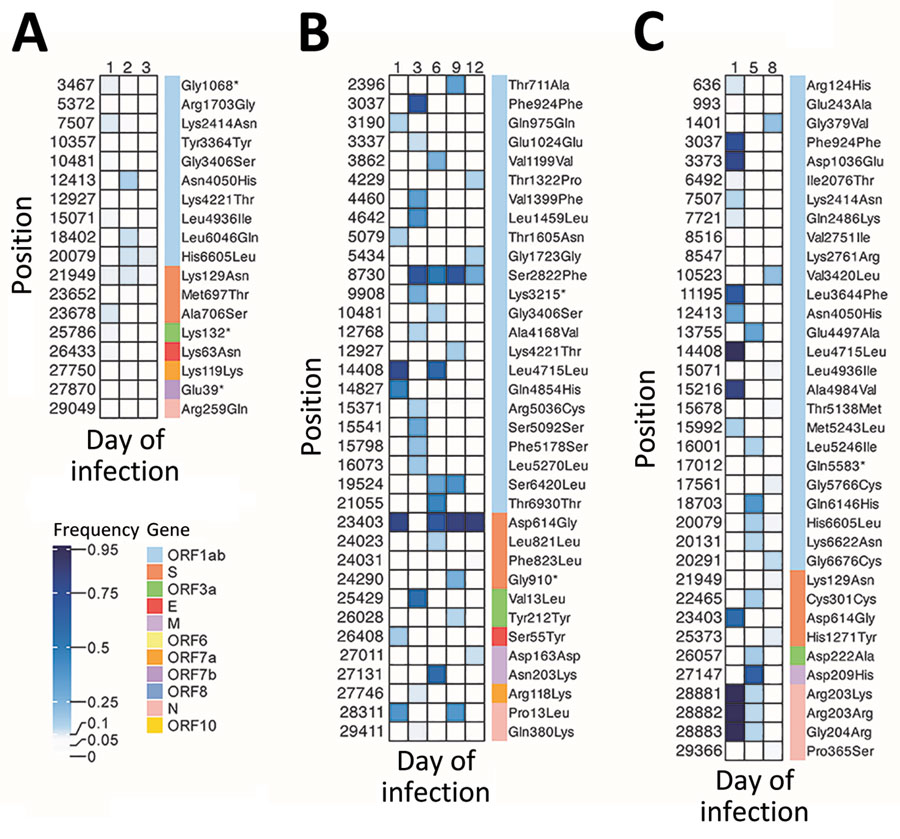Volume 31, Number 8—August 2025
Research
Rapid Emergence and Evolution of SARS-CoV-2 Intrahost Variants among COVID-19 Patients with Prolonged Infections, Singapore
Figure 2

Figure 2. Variant heatmaps from individual patients in study of rapid emergence and evolution of SARS-CoV-2 intrahost variants among COVID-19 patients with prolonged infections, Singapore. A) Patient 1, infected with B6.6 lineage; B) patient 5, infected with B1.1 lineage; C) patient 16, infected with B1.1 lineage. Heatmaps show the frequency distribution of intrahost variants (5%–95%) identified in SARS-CoV-2 genomes from longitudinal samples collected in hospitalized patients during March–May 2020. Maps show corresponding genomic positions, associated genes, and amino acid changes. E, envelope; M, membrane; N, nucleocapsid; ORF, open reading frame; S, spike.
Page created: May 31, 2025
Page updated: July 21, 2025
Page reviewed: July 21, 2025
The conclusions, findings, and opinions expressed by authors contributing to this journal do not necessarily reflect the official position of the U.S. Department of Health and Human Services, the Public Health Service, the Centers for Disease Control and Prevention, or the authors' affiliated institutions. Use of trade names is for identification only and does not imply endorsement by any of the groups named above.